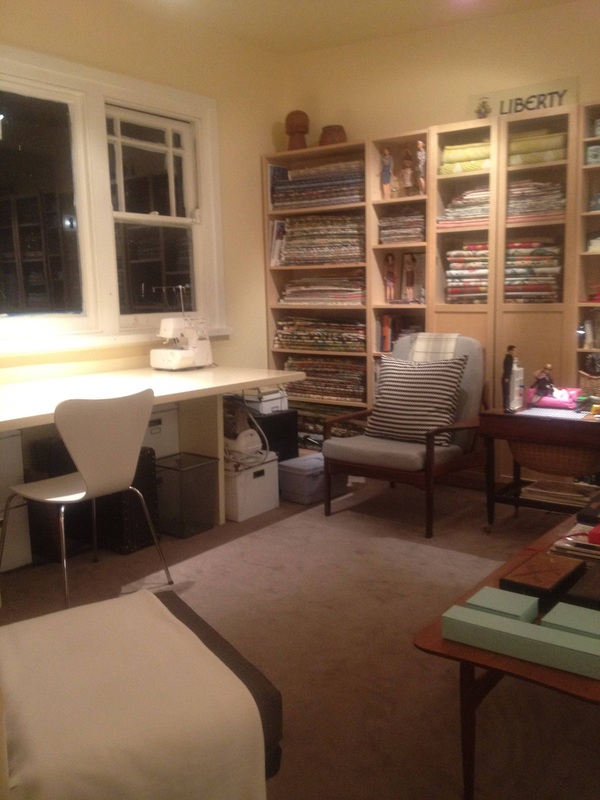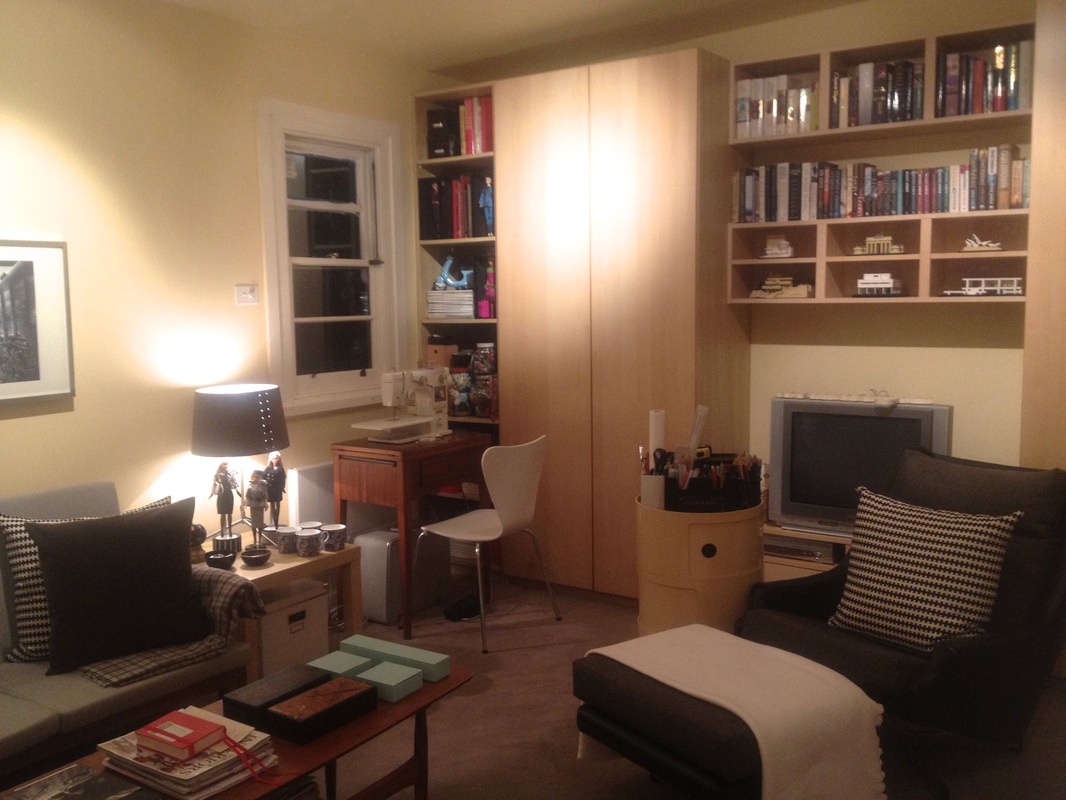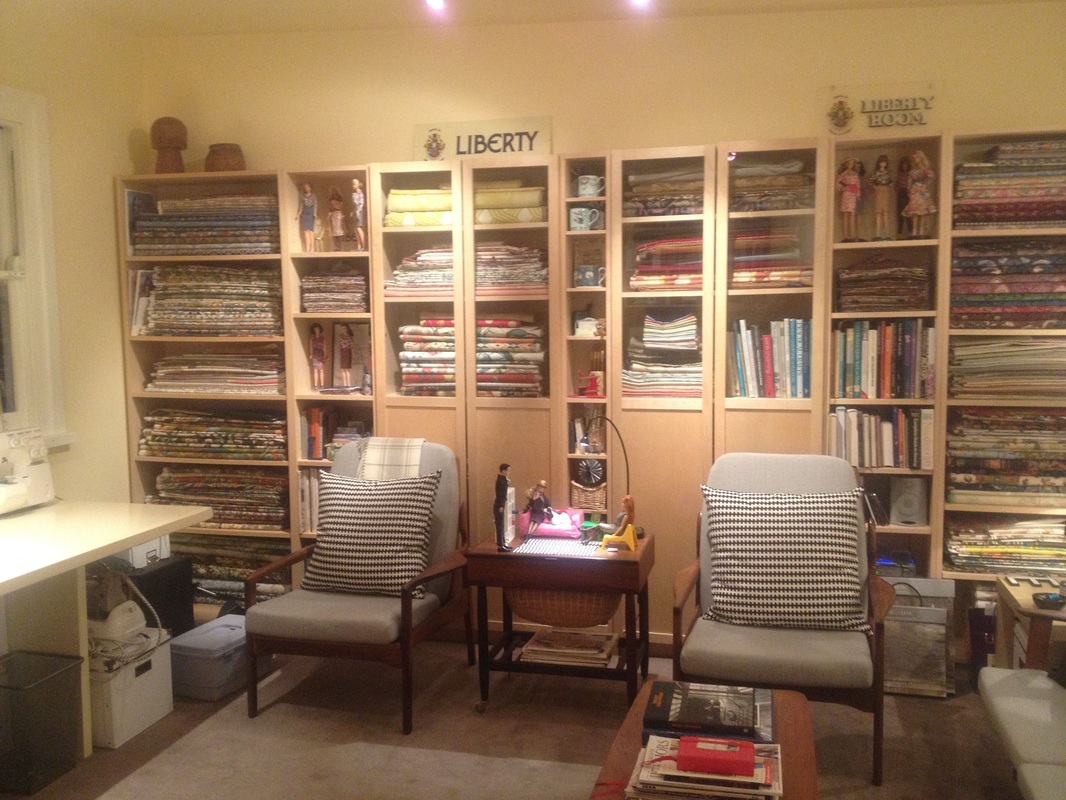


| Design Digest Journal |
|
Musings from the desk of an interior designer and design educator. How do I spend my time and what do I find interesting? This is a photo of my design studio which is set in the garden of our Californian Bungalow. It gets plenty of natural light and has lovely views of our garden. It is also the repository of many of my books on design. Yes that is an old Imac that I am very attached to. I still do much of my graphic layout work, for projects on this machine, but internet and auto cad I do on my MacBook Pro that I take everywhere with me.
|
Every home needs a space where you can carry out your hobbies. A room that has lots of natural light, plenty of storage and some stylish furniture and furnishings to create that sense of well being. So we set about creating a room by renovating our garage. I have been writing about traditional interiors and shown you aspects of our house in Melbourne , but I also love mid century modern design as well as eighteenth and early nineteenth century antiques. Our second house in country Victoria another Californian Bungalow is the repository for our other collection of furniture and the new room created over the last twelve months provides a home for a Fler day/night bed settee, a Danish rosewood sewing table, a teak coffee table and Fler arm chairs. This room holds the collection of furnishing fabrics, dress fabrics I have squirrelled away, books on crafts and sewing and many craft implements as well as my toys. I confess I have never really grown out of "Leggo" or "Barbie". The storage pieces are all Ikea. Affordable, flexible and attractive. I love Ikea and have become quite good at assembling their furniture. I have pretty much memorised all the dimensions of my favourite pieces ( tragic ) which I include in many cost effective interiors. I still have some finishing touches to complete, window coverings, cushions, and refinishing the series 7 chairs, for a splash of colour. 
A glimpse of the large work desk that sits under the south facing window that lets in plenty of light for all those detailed projects. The windows are waiting for their curtain treatments. Next project on the long list of things to do. The pure wool carpet is from Supertuft and is called 'mocha', a warm mid toned grey colour.

The east wall has cupboards to conceal all the ugly bits. The vintage singer sewing machine table was my mothers. The Kartell round storage unit came from a Ballarat 'op shop' for $15.00. The creamy colour was perfect. The Fler swivel base chair was also found at an 'op shop'. It is re-upholstered in 'Woven Image' wool.

The west wall is filled with Ikea 'Billy' shelves and a 'Beno' dvd unit just fills the space to make it wall to wall. This is where the bulk of my furnishing fabric collection lives. 'Liberty of London' fabrics feature quite heavily. The little Danish sewing table hold Ikea 1:6 scale dolls furniture.
Where do great designer's get their ideas from? In the spirit of Kevin McCloud and many more before him I want to take you on a Grand Tour of Design and Architecture. From the Ancient Egyptians to the early 21st Century I want us to look at the ideas and personalities that influence design. Each generation interprets the history of design through new eyes and gleans lessons that can inform their own approach and view on the world. While Art, Sculpture and even Architecture can seem remote to the modern interior design student, never the less, there are concepts that the Masters before us have developed that may be useful. For example: The National Portrait Gallery, Canberra, by Richard Johnson and Graeme Dix of JPW makes subtle reference to the Renaissance concept of “appropriate scale", inspired by the proportion of the human body, as suitable for a gallery of portraits. The external corners in this building have a chamfered detail to human height, an understated reference, in this modern building. Indeed the proportions of the spaces have a harmony that reflects the knowledge of classical architectural principles while still being a 21st Century building. To add meaning to our interiors is to create rooms that resonate and reference the past while acknowledging the current. Taking our own grand tour in design history allows us to add this layer of meaning to our work. We can reference our client's interests and aspirations as well as own. There are themes or general concepts that run through the story of Architecture. There is much cross over between cultures. When you see the same idea independently developed in different civilisations you realise that the human condition is the same the world over. It is useful to compare and contrast the way concepts have been applied, looking at purpose, how people engage, how a space is planned and its structure, these may inspire us to create something less ordinary. It should also be said that the great masters of Modernism, notably Walter Gropius and Mies Van Der Rohe and the whole school of Modernism in general were anti design history. A whole generation of designers grew up deprived of studying history. They rebelled, flocking to post war Europe in the 1950s and 1960s and took a modern grand tour. These architects include Richard Meier, Robert Venturi, Michael Graves , Philip Johnson and Charles Jenks. They used their new found knowledge to question their teachers and create a new architecture, Post Modernism. At first often quite clumsy it has evolved into our current architecture and acknowledges our past without making slavish copies of ancient ideas. At the beginning of the 21st century there is a new mature elegance in architecture. We are learning the lessons of the past while addressing the challenges of new technologies and environmentalism and the moral responsibility of truth to our time. Start your own Grand Tour by sourcing images of historical references and investigating their origins and ideas. These are some image from my own Grand Tour. People, plans, structure and the significance of the building are questions to pose when looking at design history. |
AuthorHi I am Elizabeth an interior designer who lives in Melbourne, Australia in a little Californian Bungalow cottage with my partner, Max, who is also an Interior Designer, and our beloved furry children, Doris & Ernest. I believe that design can make our lives more rewarding and productive. I love, architecture and design theory but my everyday passion is fabrics and decoration, as I don't think we should get too serious but have fun with our homes and enjoy the process of creating our own environments. I am interested in classic cars, and collect Georgian and Mid Century furniture. Archives
July 2018
Categories
All
|
|